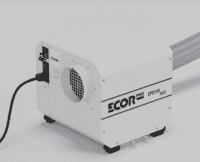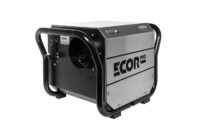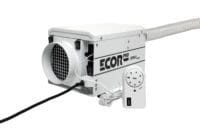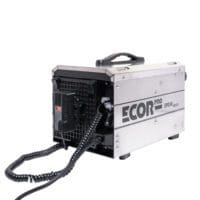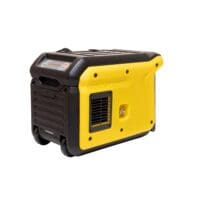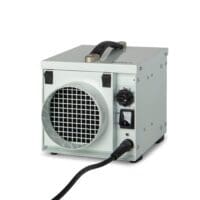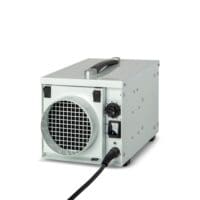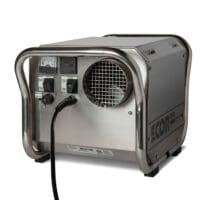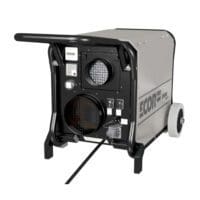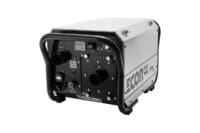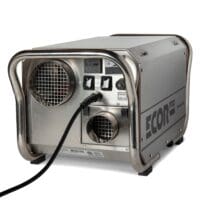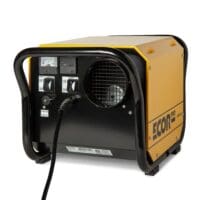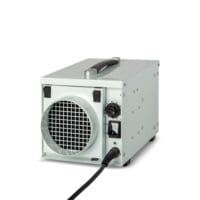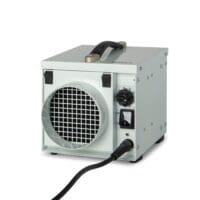

Am11. März 2020 erklärte die Weltgesundheitsorganisation (WHO) COVID-19 zu einer Pandemie, nachdem die Zahl der weltweiten Fälle in 114 Ländern 118.000 überschritten hatte.
Die COVID-19-Krankheit wird durch ein neuartiges Coronavirus (SARS-CoV-2) verursacht.
Beim Menschen verursachen Coronaviren Atemwegsinfektionen, die in der Regel mild, gelegentlich aber auch tödlich verlaufen.
Coronaviren waren für die tödlichen Ausbrüche von SARS (Schweres Akutes Respiratorisches Syndrom) und MERS (Middle East Respiratory Syndrom) verantwortlich.
Staatliche Einrichtungen, das Gesundheitswesen, Schulen und Universitäten sowie private Unternehmen haben die Möglichkeit, die potenzielle Übertragung durch ihre Gebäudeumgebung zu reduzieren.
Verfügbar zu einer Rate, die sich Hausbesitzer leisten können.
Eine Schlüsselkomponente der Raumluftqualität, die sich positiv auf die Virenübertragung und den Schweregrad von Krankheiten auswirken kann, ist die relative Luftfeuchtigkeit (RH, ausgedrückt in Prozent) der Luft.
Mit anderen Worten, wie feucht die Luft ist.
Es hat sich gezeigt, dass die Aufrechterhaltung einer relativen Luftfeuchtigkeit (RH) zwischen 30-60% die Überlebensfähigkeit of-Viren und damit die Übertragung und Infektiosität von Viruserkrankungen reduzieren.
Sterling et al. (1985) synthetisierten das damalige Wissen in einer gemeinsam genutzten Graphik über mikrobielle und Umweltkontaminationen am Menschen bei verschiedenen RH.
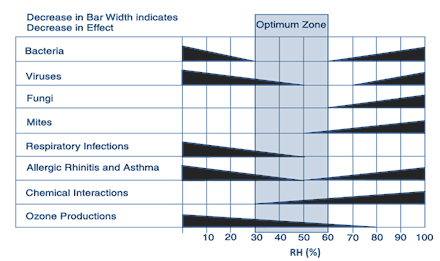

Wirkung von Krankheitserregern, Mikroben und Umweltkontaminanten auf den Menschen. Aus Sterling et al. (1985)
Neuere Studien zielen auf den Einfluss von RH auf bestimmte Virusfamilien wie Influenza und Coronavirus ab. Diese Studien konzentrieren sich auf das beobachtete Überleben auf Oberflächen und in der Luftsäule sowie auf die Infektionsraten unter verschiedenen Umweltbedingungen.
The percent infectivity of airborne influenza at a constant temperature (20°C, 68°F). Curve shows all size fractions (>4 µm, 1–4 µm, and <1 µm). From Noti et al., 2013.
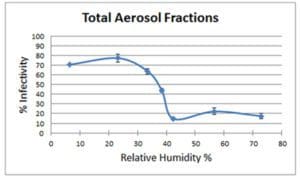



Kann ein Kältetrockner anstelle eines Trockenmittels verwendet werden?
- Das Problem bei dieser älteren Technologie ist, dass Wasser abgeleitet wird und tatsächlich immer Wasser im Inneren dieser Art von Luftentfeuchtern vorhanden ist. Daher ist das Innere eines Luftentfeuchters feucht und dieser Ort ist dann ein perfekter Ort für die Vermehrung von Bakterien.
- Schläuche, die Wasser ableiten, können diese Bakterien auch von jedem infizierten Gebiet weg transportieren.
- Ein Kältemittel-Luftentfeuchter ist nicht in der Lage, eine niedrigere Luftfeuchtigkeit zu erreichen, als es die Ecor Pro Luftentfeuchter können. Die Fähigkeit, eine niedrige Luftfeuchtigkeit zu erreichen, ist entscheidend.
- Das Substrat des Ecor Pro-Trockenmittel-Luftentfeuchters wird kontinuierlich bei hoher Hitze erhitzt, um Bakterien und Viren während des Prozesses abzutöten.
RH und virale Übertragung
- Die Aufrechterhaltung einer relativen Raumluftfeuchtigkeit zwischen 40%-60% kann dazu beitragen, die Ausbreitung und das Überleben des neuartigen Coronavirus zu begrenzen.
- Hohe Temperatur, hoher Ultraviolett-Index, niedrige Windgeschwindigkeit und niedrige relative Luftfeuchtigkeit tragen zu erhöhten MERS-CoV-Fällen bei (Altamimi et al., 2019), so dass eine Heizung, um einen Raum trocken zu halten, eine schlechte Option ist. Die Fähigkeit, ohne Wärme zu trocknen, ist entscheidend.
- Kalte und trockene Bedingungen begünstigen die Übertragung von Influenza bei Meerschweinchen (Lowen et al., 2007), so dass es nicht ratsam ist, im Winter nur die Fenster zu öffnen, um die Wärme nach draußen zu lassen.
- Die Aufrechterhaltung von RH in Büros, am Arbeitsplatz und sogar zu Hause verringert potenziell das Risiko der Übertragung von Viruserkrankungen (Wolkoff, 2018 und Referenzen darin).
RH und Virus-Überleben
- Während Coronaviren im Vergleich zu Influenzaviren auf Oberflächen beständig sind, sind die Überlebensraten bei einer moderaten relativen Feuchte von 50% reduziert. (Casanova et al., 2010)
- Die Infektiosität von luftübertragenen Influenzaviren wurde signifikant reduziert, wenn die relative Feuchte über 40% lag (Noti et al., 2013)
- Es ist anzumerken, dass Kompressorenentfeuchter (oft als Kältetrockner bezeichnet) in der Regel eine Luftfeuchtigkeit von bis zu 45% relativer Feuchte (RH) erreichen können, real oft 55% RH. Die DryFan-Trockenluftentfeuchtungstechnologie kann bei Bedarf in korrekt abgedichteten Häusern viel niedrigere und oft 35% relative Luftfeuchtigkeit erreichen, so dass sie viel besser in der Lage sind, das korrekte Feuchtigkeitsniveau zu halten, das zur Bekämpfung von Viren erforderlich ist.
LAtest NEws
Literaturhinweise & Weiterführende Lektüre
- Dietz, L., Horve, P.F., Coil, D., Fretz, M., Van Den Wymelenberg, K. (2019). Ausbruch des neuartigen Coronavirus (COVID-19): Ein Überblick über die aktuelle Literatur und Überlegungen zur Verringerung der Übertragung in der bebauten Umwelt (BE). Vorabdrucke 2020, 2020030197.
- Lowen, A. C., Mubareka, S., Steel, J., & Palese, P. (2007). Die Übertragung des Influenzavirus ist von der relativen Luftfeuchtigkeit und der Temperatur abhängig. PLoS-Pathog, 3(10), e151
- Myatt, T. A., Kaufman, M. H., Allen, J. G., MacIntosh, D. L., Fabian, M. P., & McDevitt, J. J. (2010). Modellierung des luftübertragenen Überlebens des Influenzavirus in einer Wohnumgebung: die Auswirkungen der Luftbefeuchtung zu Hause. Umweltgesundheit, 9(1), 55
- Casanova, Lisa M., et al. "Auswirkungen von Lufttemperatur und relativer Feuchtigkeit auf das Überleben von Coronaviren auf Oberflächen". Appl. Umgebung. Mikrobiol. 76.9 (2010): 2712-2717. DOI: 10.1128/AEM.02291-09
- Altamimi, A., & Ahmed, A. E. (2019). Klimafaktoren und Inzidenz des Coronavirus des respiratorischen Syndroms im Nahen Osten. Zeitschrift für Infektion und öffentliche Gesundheit, In Press. DOI:10.1016/j.jiph.2019.11.011




